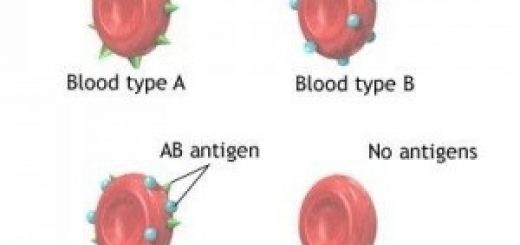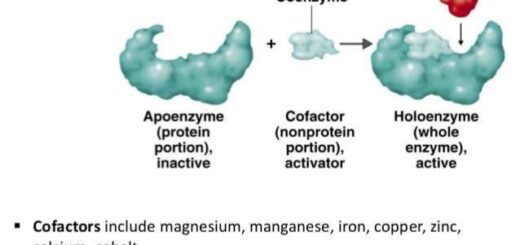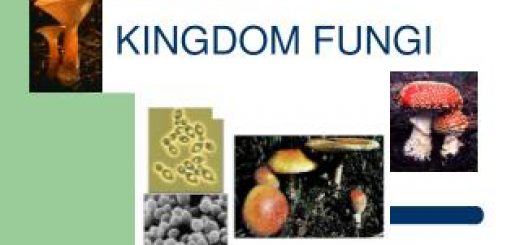Mechanism of the transport in higher plants, Theories explain the ascent of water in plant
Mechanism of transport in higher plants is a process that includes two different processes which are the transport of the water and the minerals from the root to the leaf, and the transport of manufactured food from the leaf to all parts of the plant.
Mechanism of water & mineral salts transport from the root to the leaf
Xylem is responsible for the translocation of water and minerals salts from the root to the leaf by forces acting on the ascent of this sap in the plant, many theories explain the ascent of water in the plant.
Root pressure theory
If the plant stem is cut very near to the soil level, we can see the exudation (exiting) of water from the stump, This phenomenon is known as exudation which occurs due to the root pressure that continues to force water up the plant.
Root pressure is a force or pressure that arises in the root, due to the continuous and direct absorption of water by osmosis, Exudation is the phenomenon of exiting of water from the plant stem, when it is cut very close to the soil surface under the effect of root pressure.
The water is forced vertically upward through the xylem vessels for a short distance to a certain level, At this level, The water stops because the opposing pressure of the water column in the xylem vessels has become equal to the root pressure.
Experiments have proved that there is no reasonable explanation for the ascent of water to high levels in tall trees by root pressure because root pressure does not exceed 2 atm, and pinus and other conifers have no root pressure, The force of root pressure is affected quickly by the external factors.
Imbibition theory
The colloidal nature of cellulose and lignin in the walls of xylem vessels has helped them to imbibe water, This phenomenon has a very limited effect on the ascent of sap, as experiments have proved that the sap ascends through the cavities of xylem vessels and not along their walls only.
The importance of this phenomenon is restricted to the transport of water along the cell wall, until it reaches the walls of vessels and tracheids of the root, and from these vessels and tracheids to all the plant parts.
Capillarity theory
The capillarity phenomenon is the phenomenon of rising of water in very narrow tubes, Xylem vessels are considered as capillary tubes with diameters ranging from 0.2 mm to 0.5 mm, so, water will rise in these vessels by the phenomenon of the capillary.
The capillarity phenomenon is a weak secondary force for the ascent of sap, as the finest capillary tube does not allow the rise of water more than a height of 150 cm.
Transpiration pull -cohesion- Adhesion theory
This theory originated principally by the two scientists H.H. Dixon and J.Joly in 1895, They proved that the principal forces that pull water upward to very high levels approximately 100 m through the xylem vessels depending upon the following:
- Cohesive force between the molecules of water inside the xylem vessels and tracheids, The evidence: existence of a continuous column of water inside the vessels’ tubes, The condition: The tubes must be free of any gas or air bubbles to avoid the break and descent of the water column.
- Adhesive force between the water molecules and those of the walls of xylem vessels, The evidence: water column is held against the effect of gravity, The conditions: walls of the tubes must possess an adhesive force to attract water (colloidal nature).
- Transpiration pull which originated from the transpiration process in leaves, The evidence: attraction of water column upward, due to the continuous process of transpiration, The condition: Tubes must be capillary.
Some seedlings, when transplanted from a nursery to an open soil, fail to grow if they remain exposed to the sun for a long time, Because they were subjected to dryness & formation of air bubbles inside the conducting tubes (xylem vessels and tracheids), causing the break of water column inside these tubes and finally the seedlings wilt and die.
Path of sap during its ascent from the root to the leaves
- Transpiration lessens the water concentration in the air chamber above the stomata in the leaf.
- Evaporation will therefore increase from the mesophyll cells surrounding the stomata chambers, Such case will lessen the water content of these cells and increase their solute concentration.
- This state will create an osmotic pressure gradient for water called pulling force which attracts water from the surrounding cells.
- This will continue as far as the xylem elements in the venules and veins, then finally from the midrib of the leaf.
- Being subjected to a great force, water will ascend through the xylem vessels and tracheids of both stem and root, as they are connected to each other.
The transpiration pull of the leaf will not only pull water that has reached the vascular cylinder of the root up, but it will also help in the lateral pull of water from the root hairs.
Transport of the manufactured food from the leaf to all parts of the plant
The phloem translocates the manufactured food (which consists of high-energy organic substances that are produced by the leaf during photosynthesis) in all directions:
- Upwards to feed the buds, flowers and fruits.
- Downwards to feed the stem and the root system.
Role of sieve tubes in the transportation of ready-made food
Experiments have proved the role of sieve tubes in the transport of ready-made food substances to various parts of the plant as the following:
Experiment 1 : The two scientists Rapeden and Bohr in 1945
They supplied a green bean leaf with CO2 containing 14C (radioactive carbon), in order to carry out photosynthesis and produce carbohydrates, The plant produced radioactive carbohydrates.
They traced the path of radioactive carbohydrates in the plant, Carbohydrates were translocated upwards as well as downwards in the stem.
Experiment 2: Scientist Mittler
He used an Aphid insect (it feeds on the ready-made food of plants) to describe the contents of sieve tubes, in order to identify these contents.
Steps: The insect penetrated the tissue of the plant, until it reached the sieve tubes by its piercing mouthparts, So, the food passed through the mouth of the insect to its stomach.
He separated the whole body of the insect from its mouthparts during its feeding, so, he managed to collect a sample of the sieve tube contents, and then he analyzed the sample, So, the sample of sieve tubes consisted of organic substances that were manufactured in the leaves (sucrose and amino acids).
He sectioned the region of the plant where the proboscis of the insect was inserted, So, the proboscis is appeared to be inserted in a sieve tube by its piercing mouthparts.
Conclusion: The absorbed food by the insect was the sap of phloem that was transported to all the plant parts.
Mechanism of organic substances transport in the phloem
In 1961, the scientists Thain & Canny could see long cytoplasmic threads that contain the organic substances inside the sieve tubes and these lines extend through the tiny pores of the sieve plate from one tube to another which is known as cytoplasmic streaming.
Cytoplasmic streaming is the circular movement of cytoplasm inside the sieve tubes and companion cells by which the organic food substances are translocated.
Thain & Canny explained the transportation of the organic substances in the phloem on the basic of cytoplasmic streaming as the following:
- The organic substances are translocated from one end to another end of the sieve tube through the cytoplasmic streaming.
- They pass to the neighbouring sieve tubes through the plasmodesmata threads which pass from one tube to another.
Thain & Canny explained that this activity needs more ATP molecules that exist in the companion cells, This is proved later by: The experiments which show that the transportation process is delayed with the decrease of temperature or oxygen in the cells, thus delaying the movement through the sieve tubes.
In scientific references, it is mentioned that the organic food substances pass from one sieve tube to the neighbouring ones through the cytoplasmic strands which pass from one tube to another.
Also, ATP molecules existing in the companion cells are translocated through the plasmodesmata (that join the companion cell’s cytoplasm with the sieve tube’s cytoplasm) to the neighbouring sieve tube).
Transportation in plant, Structure and role of the plant stem in the process of transportation
Asexual and sexual reproduction in plants, Pollination and Stages of fertilization process in plants



